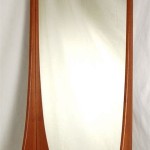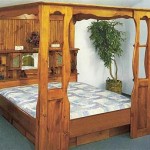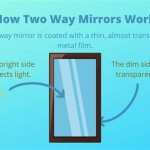How to Mount a Heavy Bathroom Mirror Securely
Mounting a heavy bathroom mirror requires careful planning and execution to ensure both safety and longevity. Improper installation can lead to the mirror falling, causing damage and potential injury. This guide provides a step-by-step approach to securely mount a heavy bathroom mirror.
1. Assess the Mirror and Wall
Before beginning, gather information about the mirror's weight and dimensions. This information is crucial for selecting appropriate mounting hardware. Similarly, assess the wall type. Drywall requires different fasteners than concrete or tile. Locate wall studs using a stud finder for optimal support, especially for heavier mirrors. Understanding the wall's composition is paramount for choosing the right anchors and screws.
2. Choose the Right Mounting Hardware
Selecting the correct mounting hardware is critical for supporting the mirror's weight. For lighter mirrors, heavy-duty mirror adhesive might suffice. However, heavier mirrors necessitate mechanical fasteners such as J-clips, D-rings, or French cleats. These provide a more secure hold. When using screws, opt for those specifically designed for the wall type (e.g., drywall screws, concrete screws). Ensure the weight capacity of the chosen hardware exceeds the mirror's weight by a significant margin for added safety. Consider consulting with a hardware professional for recommendations if unsure.
3. Gather Necessary Tools and Materials
Having the right tools readily available streamlines the installation process. Essential tools include a drill, level, measuring tape, pencil, and screwdriver. Depending on the wall type, a hammer, stud finder, and safety glasses might also be necessary. Gather the chosen mounting hardware, including screws, anchors, and any necessary clips or brackets. Having all materials prepared beforehand prevents interruptions during the installation.
4. Mark the Mirror's Position
Careful measurement is key to ensuring the mirror is positioned correctly. Determine the desired height and mark the center point on the wall. Use a level to draw a horizontal line across the wall at this height. This line serves as a reference point for aligning the mounting hardware. Measure the distance between the mounting points on the back of the mirror and transfer these measurements to the horizontal line on the wall. Precision in marking ensures the mirror hangs straight and level.
5. Install the Mounting Hardware on the Wall
With the marked positions, begin installing the wall-side mounting hardware. If using anchors, drill pilot holes of the appropriate size before inserting the anchors. Then, secure the mounting hardware to the wall using the appropriate screws. Ensure the hardware is firmly attached and sits flush against the wall. For heavier mirrors, ensure attachment to wall studs whenever possible provides the most robust support.
6. Attach the Corresponding Hardware to the Mirror
Depending on the chosen mounting system (J-clips, D-rings, French cleats), attach the corresponding hardware to the back of the mirror. Follow the manufacturer's instructions for proper installation. Ensure the hardware is securely fastened to the mirror frame or backing. Precise alignment of the mirror-side hardware with the wall-mounted hardware is crucial for proper fitting.
7. Mount the Mirror
With both sets of hardware installed, carefully lift the mirror and engage it with the wall-mounted hardware. For J-clips, slide the mirror into the clips. For D-rings, hang the rings onto the corresponding hooks. For French cleats, engage the two cleat sections. Ensure the mirror is seated securely in the mounting hardware. Once mounted, gently tug on the mirror to verify its stability.
8. Check for Level and Stability
After mounting, use a level to confirm the mirror hangs straight. Make any necessary adjustments to the mounting hardware if needed. Apply gentle pressure to different areas of the mirror to ensure a secure hold. Double-check that the mirror doesn't shift or wobble. A stable and level mirror ensures both aesthetic appeal and safety.
9. Apply Finishing Touches (Optional)
Depending on the mounting hardware and mirror design, finishing touches might be required. Some installations might benefit from mirror mastic, a sealant applied between the mirror and the wall, providing additional stability and preventing moisture buildup. Covering screws or brackets with decorative caps can enhance the overall appearance. These final steps ensure a professional and polished look.

How To Install A Mirror Without Frame Merrypad

How To Hang A Heavy Mirror Diy Family Handyman

How To Hang A Hanging Mirror Without Accompanying Hardware

How To Hang A Large Or Heavy Mirror

How To Hang A Heavy Mirror

How To Hang A Very Heavy Picture Or Mirror The Best
:strip_icc()/DesireeBurnsInteriors1-f76d25cad90041c88fbae4a7dc10aab4.jpg?strip=all)
2 Simple Ways To Hang A Frameless Mirror

How To Hang A Heavy Mirror

How To Hang A Frameless Mirror On The Wall With Pictures

How To Hang A Heavy Mirror Or Picture True Value








